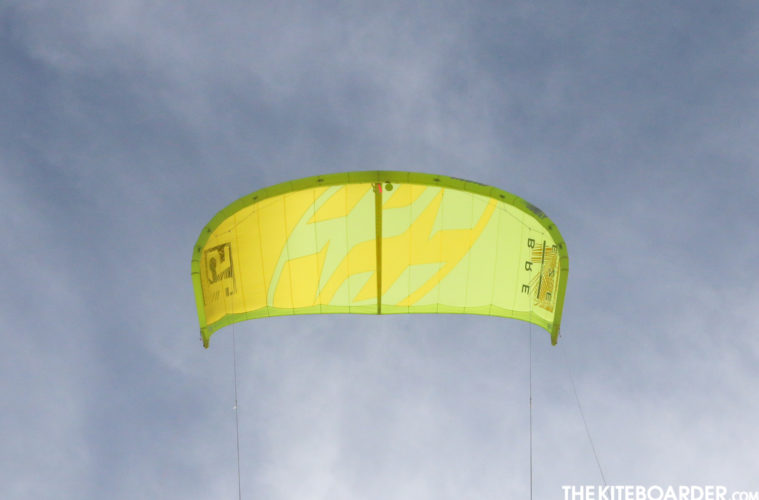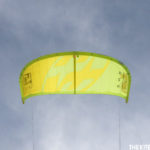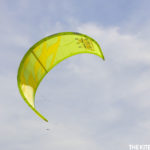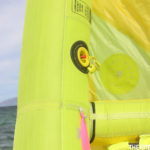Sizes Available: 3, 4 ,5, 7, 9, 11, 13, 15, 17m
Sizes Tested: 13, 15m
F-ONE Says:
The BREEZE V2 is for anyone who wants a lightweight set up that offers incredible handling with great low-end performance. It is the perfect kite for light wind freeriding, and foiling in any conditions. Thanks to its stability and light weight, the Breeze can show off interesting performances in light wind wave riding too.
Our design and test team have worked tirelessly to bring significant improvements to the BREEZE V2. You’ll discover the new kite has a more stable canopy when depowered and the overall range of the kite has been widened.
Across the range of sizes, the handling has been finely tuned; the larger sizes are even more responsive, making them perfect for maneuvers. The smaller sizes are optimized to handle stronger winds with total speed control and great stability while foiling. In the air, the Breeze V2 is so intuitive to fly you can forget about the kite and concentrate on the riding. This unique characteristic makes it perfect for beginners and advanced riders alike.
The kite has also been designed to work with a low front V on the bar to untangle lines after those inevitable kite crashes. If you want a lightweight, one-strut kite that can put a smile on your face in 8 knots, the decision is easy, let’s get breezy!
Visit for more info: https://www.f-one.world/product/breeze-v-2/
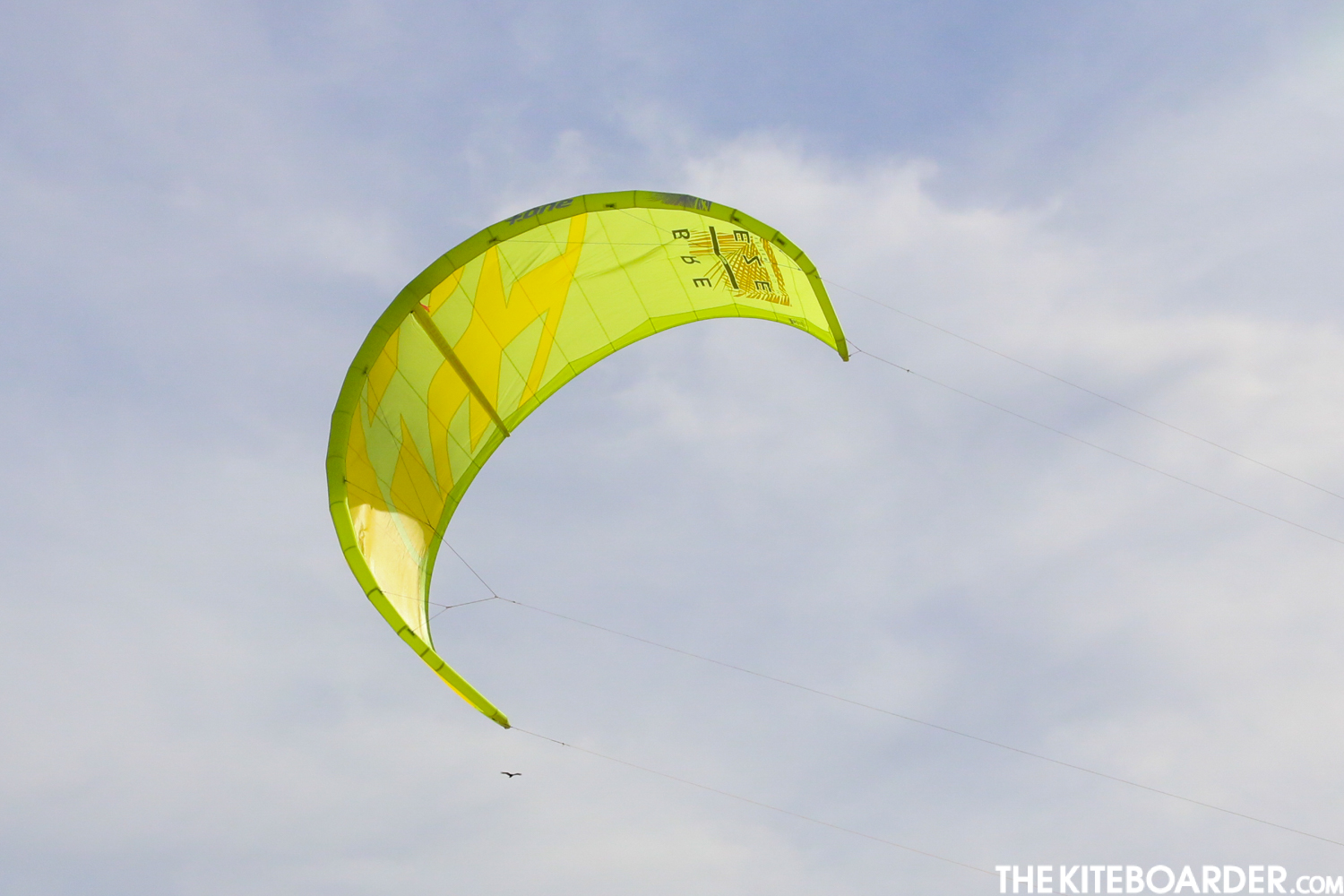
TKB Says:
The Breeze is back with its medium to slightly higher aspect airframe that relies on its one-strut platform to deliver lightweight and controlled power performance. Whether you are a bigger foilboarder with extra power needs or a dedicated twin tip rider, the Breeze will deliver good power range with comfortable controls to keep your light wind sessions lively and fun. The Breeze keeps the canopy weight down with minimal use of dacron on the wingtips and a double ripstop trailing edge and does not use battens to control the canopy. The Breeze integrates F-One’s high flow inflation valve that uses a proprietary pump hose attachment that comes with the kite and a push button spring-based valve that must be in the closed position before inflating. To release air you untwist a cover and depress a spring-actuated button. The system works great for fast inflation and easy deflation. The Breeze features a single setting front bridle with two pulleys that adjust its angle of attack and the wingtip attachment points have a load-sharing V-bridle which offers two adjustment positions by altering the geometry of the V. Completing the setup, both it’s front and rear attachment point pigtails ending in a knot.
The first thing we noticed about the Breeze in the 13 and 15m sizes was how swift the turning response felt for the larger sized canopies. The slightly higher aspect ratio seems to turn in a slightly wider steering arc compared to the smaller sized Breeze’s we tested last year, with the lighter single-strut airframe feeling nimble and quick through turns relative to their sizes. The bar throw on the Breeze feels a little bit longer with nice progressive power delivery across that longer throw for a really smooth and intuitive bar feeling across the entire angle of attack. Testers found the Breeze to have very comfortable middle of the road bar pressure that gives the rider tuning feedback while not causing fatigue on longer sessions. The one thing the Breeze doesn’t give you is quite the same crisp feedback you get from the Bandit, but that’s the tradeoff of optimizing a minimal airframe for light wind performance. The Breeze seemed to fly a little farther forward in the window and got excellent marks for its easy upwind ability. While the Breeze isn’t really a jumping kite, it does generate a good amount of lift and hangtime that can be both really fun and user-friendly for general freeride jumping. One of the Breeze’s real advantages is its wide range and easy power control, with a sheet-and-go feeling that offers up complete depower when you need it. The larger kites offered good low-wind range and in the top-end range, we were fairly impressed by the canopy’s stability when completely depowered, with little canopy turbulence transferring back to the bar. In the larger sizes, the Breeze will be ideally suited for larger foilboarders who need a little extra grunt to get going in light air where excellent power control and drift/stability are key to a fun freeride experience. The Breeze’s light weight, nimble turning and comfortable bar feel will also strike a chord with twin tip and surfboard riders for its solid range, easy access to power and ability to keep light wind riding exciting and fun.
The Breeze came with the Linx control bar, a dual adjustable length bar that comes in two sizes (38/45cm and 45/52cm) and features single centerline safety depower that flags the kite on one line and an option to switch between a low and high V (high V for the Bandit kite and low V for the Furtive/Breeze). This year the bar’s color-coding got an upgrade with a more subdued orange on the left and dark blue on the right (the previous version had watermelon red and lime green). Both the center and outside lines end in loops and the flying lines do not have any built-in extensions. The Linx features an above the bar cleat for adjusting power and a plastic-coated trim/throw line for durability. There is no sliding stopper and while you cannot adjust the length of the bar throw along the plastic, you can adjust the distance to the power tuning cleat. The quick release features a built-in swivel above the push release which also works as a quick-release travel guard. The release and reset process is a two-handed process. When you slide the release handle away from you it locks into position; to reset, you place the loop back into the gate, then raise the release handle with one hand and use the thumb of your other hand to push the locking gate down while letting go of the release handle to slide back into place. While it’s not automatic, with some practice it becomes intuitive, reliable, quick and easy. The below the bar stainless steel ball-bearing swivel rotates easily and allows you to untwist your front lines after rotational tricks with no problems. Testers commented about the seemingly narrow length of the Linx bars but additionally noted that the kites were highly responsive. The bar ends feature integrated floats with retractable bar bungees and the outside lines can be adjusted for stretch. The Linx comes with an additional float above the center lines; this is to maintain positive buoyancy if you become disconnected from your bar. The bar ends have inserts accessed from the bottom that are used to adjust the effective length of the bar as well as tune the outside line lengths between five knots. The grip has a rubbery feel with a fine texture and the grip is fairly narrow in diameter with an asymmetrical ridge on top. The grip feels firm underneath and a bit more cushy on the top where your fingers wrap around the bar. Testers highlighted the Linx’s lower weight and simplicity and gave it high marks for comfort and function.
Visit for more info on the bar: www.f-one.world/product/linxbar-2/

Want to view all our 2020 Freeride, Light Wind and Wingsurf Gear Reviews in one convenient digital guide? Get free access HERE. If you’re already a subscriber, thank you for your support! Log into your account to view our 2020 Freeride Gear Review Guide.


